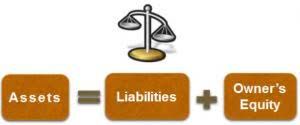
The prudence concept is a core accounting principle that means choosing conservative methods to understate assets and overstate liabilities, anticipating potential losses and… Ed’s inventory would have an ending debit balance of $38,000. He has $30,000 sitting in inventory and buys another what are normal balances in accounting 5 computers worth $10,000. Assume he bought the computers with cash and his starting cash account had $25,000 in it.
What Credit Score Do You Need For Surge Credit Card
You will often see the terms debit and credit represented in shorthand, written as DR or dr and CR or cr, respectively. Depending on the account type, the sides that increase and decrease may vary. They show changes in accounts within the bookkeeping system. Debits increase asset and expense accounts but decrease liabilities, equity, Catch Up Bookkeeping and revenue.
- Our cutting-edge technology streamlines complex accounting processes, enabling businesses to effortlessly track expenses, manage invoices, and maintain accurate financial records.
- By understanding and tracking the normal balance of Accounts Payable, businesses can manage their short-term financial obligations efficiently.
- Examples include cash, investments, accounts receivable, inventory, supplies, land, buildings, equipment, and vehicles.
- Understanding debit and credit normal balances is one of the building blocks of an Accounting fundamental.
Permanent and Temporary Accounts
This expectation serves as a checkpoint for accountants, who can quickly verify whether an account’s balance aligns with its normal state or if further investigation is warranted. Accurate bookkeeping is the backbone of financial health for any business, ensuring that every transaction is properly recorded and accounted for. At the heart of this precision lies an understanding of normal account balances—a concept critical to maintaining the integrity of a company’s books.
How to Know What to Debit and What to Credit in Accounting
- Knowing the normal balance of an account helps you understand how to increase and decrease accounts.
- When a company purchases goods or services on credit, it records a credit entry in the Accounts Payable account, increasing its balance.
- This portion of the standard outlines requirements and best practices related to normal balances.
- The “normal balance” for an account in accounting refers to whether that account typically carries a debit or credit balance.
- For further details of the effects of debits and credits on particular accounts see our debits and credits chart post.
- For example, a contra asset account such as the allowance for doubtful accounts contains a credit balance that is intended as a reserve against accounts receivable that will not be paid.
- Now, let’s move on to discussing the concept of normalizing entries in accounting.
This knowledge allows for consistency across different businesses and facilitates the analysis and comparison of financial information. The normal balance is the expected balance each account type maintains, which is the side that increases. As assets and expenses increase on the debit side, their normal balance is a debit. Dividends paid to shareholders also have a normal balance that is a debit entry. Since liabilities, equity (such as common stock), and revenues increase with a credit, their “normal” balance is a credit. Table 1.1 shows the normal balances and increases for each account type.
How does the accounting equation relate to normal balances?
The answer lies in the learning of normal balances of accounts and the rules of cash flow debit and credit. Any particular account contains debit and credit entries. The account’s net balance is the difference between the total of the debits and the total of the credits. This can be a net debit balance when the total debits are greater, or a net credit balance when the total credits are greater. By convention, one of these is the normal balance type for each account according to its category. Expense accounts are used to record the consumption of assets or services that are necessary to generate revenue.
The Accounting Equation
It enhances decision-making, financial analysis, and compliance with accounting standards and regulations. This means that when invoices are received from suppliers, the accounts payable account is credited, and when payments are made to suppliers, the accounts payable account is debited. Finally, the normal balance for a revenue or expense account is a credit balance. For example, if a company wanted to increase its inventory (an asset), it would make a journal entry to debit inventory and credit cash (another asset). For example, the normal balance of an asset account is a credit balance.
- However, only $6,000 is in cash because the other $4,000 is still owed to Andrews.
- It’s important to note that normalizing entries should be supported by proper documentation and justification.
- Temporary accounts (or nominal accounts) include all of the revenue accounts, expense accounts, the owner’s drawing account, and the income summary account.
- Interest Revenues account includes interest earned whether or not the interest was received or billed.
- The relationship between normal balances and the categories of assets, liabilities, and equity ensures that the accounting equation remains in balance.
- The goal of accounting is to produce financial statements.
Based on the rules of debit and credit (debit means left, credit means right), we can determine that Assets (on the left of the equation, the debit side) have a Normal Debit Balance. Remember, the double-entry bookkeeping method and the Accounting Equation are your trusty companions on this journey. They work in tandem to ensure that your financial records remain balanced and precise.





Kommentare